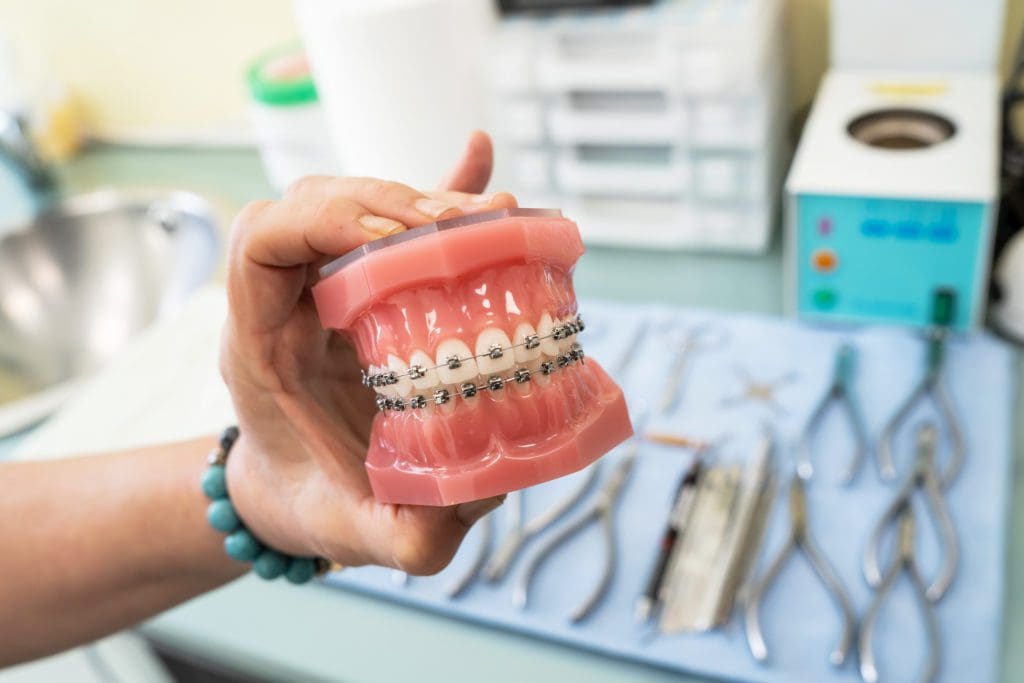Why Cumming Invisalign is the Perfect Selection for a Discreet Orthodontic Solution
Why Cumming Invisalign is the Perfect Selection for a Discreet Orthodontic Solution
Blog Article
Comprehensive Guide to Orthodontics Treatments for Remedying Oral Imbalances
In the realm of orthodontics, the journey to accomplishing a completely lined up smile entails a myriad of treatments tailored to fix oral imbalances. From traditional braces to undetectable aligners and also medical options, the field of orthodontics uses an array of solutions to deal with varying degrees of dental abnormalities. Recognizing the intricacies of each procedure, including their mechanisms, benefits, and potential disadvantages, is crucial in making informed decisions about one's orthodontic treatment. As we navigate through the extensive guide to orthodontic procedures for fixing dental misalignments, the elaborate details of each technique will unfold, clarifying the course towards a useful and unified oral positioning.
Orthodontic Procedures Overview

Routine adjustments and monitoring are crucial parts of orthodontic treatment to guarantee development is on track and to make any kind of essential modifications along the method. By undergoing orthodontic procedures, individuals can not just attain a straighter grin however additionally boost their total dental wellness and feature.
Typical Dental Braces: Just How They Function
When thinking about orthodontic treatments for oral misalignments, typical dental braces stick out as a time-tested approach for remedying teeth positioning. Typical braces contain braces, wires, and bands that function together to use continuous stress on the teeth, slowly moving them right into the preferred placement. The brackets are affixed to the teeth using an unique adhesive, and the wires are threaded via the brackets. By readjusting the tension of the cables, orthodontists can control the direction and pressure put on each tooth, assisting them right into appropriate placement in time.
One trick aspect of how typical dental braces work is the process of bone improvement. As stress is applied to the teeth through the braces, the bone surrounding the teeth is reshaped to support the brand-new tooth placements. This makeover is vital for the lasting stability of the fixed positioning. Individuals will certainly require normal adjustments at the orthodontist's office to make certain the dental braces proceed to apply the right pressure for reliable teeth activity.
Undetectable Aligners: Advantages And Disadvantages
Undetectable aligners provide a convenient and very discreet alternative to conventional braces for correcting oral imbalances. These clear, personalized trays are essentially unnoticeable when put on, making them an appealing option for people looking for a much more visually pleasing orthodontic treatment. One of the key benefits of unnoticeable aligners is their removability, permitting easier upkeep of oral health contrasted to standard braces. People can eliminate the aligners before consuming or brushing their teeth, decreasing the risk of food obtaining stuck in the appliance and streamlining the cleaning procedure.

Surgical Orthodontic Options
Surgical interventions in orthodontics existing feasible choices for attending to intricate oral misalignments that may not be efficiently solved through standard orthodontic therapies. While traditional braces and invisible aligners can correct several orthodontic concerns, specific situations require surgical treatment to accomplish ideal results. Surgical orthodontic options are generally recommended for extreme malocclusions, substantial jaw inconsistencies, and cases where the underlying bone structure requires adjustment to achieve correct placement.
One typical surgical orthodontic treatment is orthognathic surgical treatment, which entails rearranging the jaws to fix useful problems such as difficulty talking or eating. This surgery is usually executed in partnership with an orthodontist who helps align the teeth webpage prior to and after the treatment. Surgical orthodontics may also include procedures to subject impacted teeth, eliminate excess gum cells, or improve the jawbone to produce a more harmonious face profile.
Prior to thinking about surgical orthodontic choices, clients go through a thorough assessment to establish the requirement and potential benefits of such interventions. invisalign. While surgery may appear difficult, it can significantly enhance both the feature and visual appeals of the smile in situations where conventional orthodontic treatments fail
Retainers and Post-Treatment Care

Post-treatment treatment involves complying with the orthodontist's guidelines diligently. This may include appropriate dental health techniques, participating in follow-up appointments, and wearing the retainers as recommended. Failure to abide with post-treatment treatment guidelines can cause regression, where the teeth progressively return towards their original positions. Consistent retainer wear, good oral hygiene, and regular dental check-ups are important for preserving the results accomplished with orthodontic surgical treatment and making certain the lasting security of the remedied dental positioning.
Verdict
To conclude, orthodontic treatments provide various alternatives for dealing with oral misalignments. Traditional dental braces utilize metal braces and cables to change teeth right into proper placement. Undetectable aligners offer an even more very discreet alternative but may view not appropriate for all instances. Surgical orthodontic choices are available for extra serious imbalances. Retainers are frequently used post-treatment to keep the new placement. In general, orthodontic treatments can efficiently improve dental health and visual appearance.
As we browse via the extensive overview to orthodontic treatments for fixing oral imbalances, the elaborate details of each method will certainly unfold, dropping light on the course towards a useful and unified dental positioning. - invisalign
One of the most usual orthodontic therapies is the usage of braces, which consist of metal brackets and cords that use mild pressure to gradually move teeth into the preferred placement.When considering orthodontic therapies for oral imbalances, traditional braces stand out as a tried and true technique for remedying teeth placing. In addition, invisible aligners may not be suitable for intricate orthodontic issues that require more significant teeth movement, as they are normally suggested for moderate to modest instances. Retainers are custom-made orthodontic devices designed to hold teeth in their corrected positions after the conclusion of orthodontic therapy.
Report this page